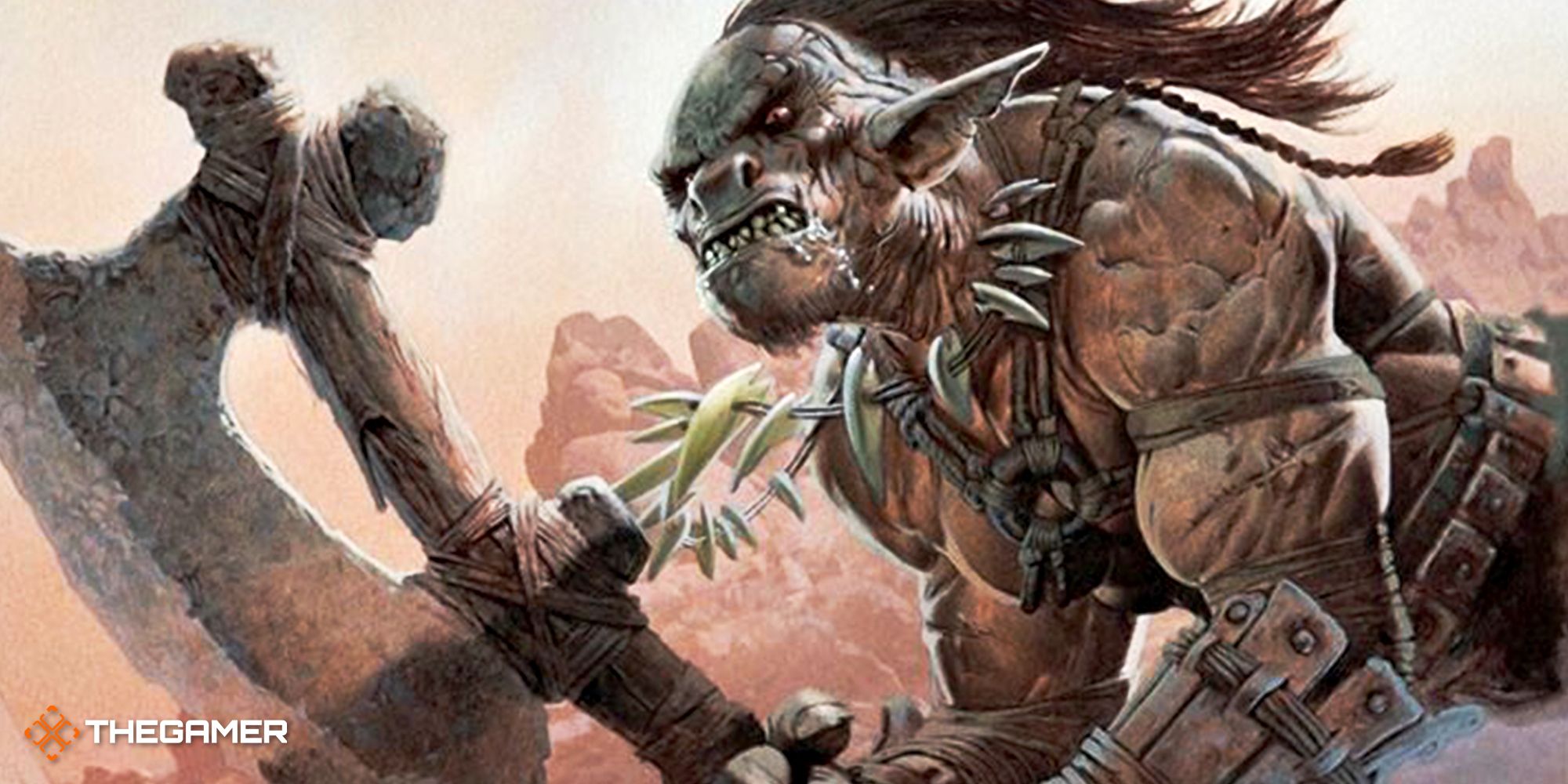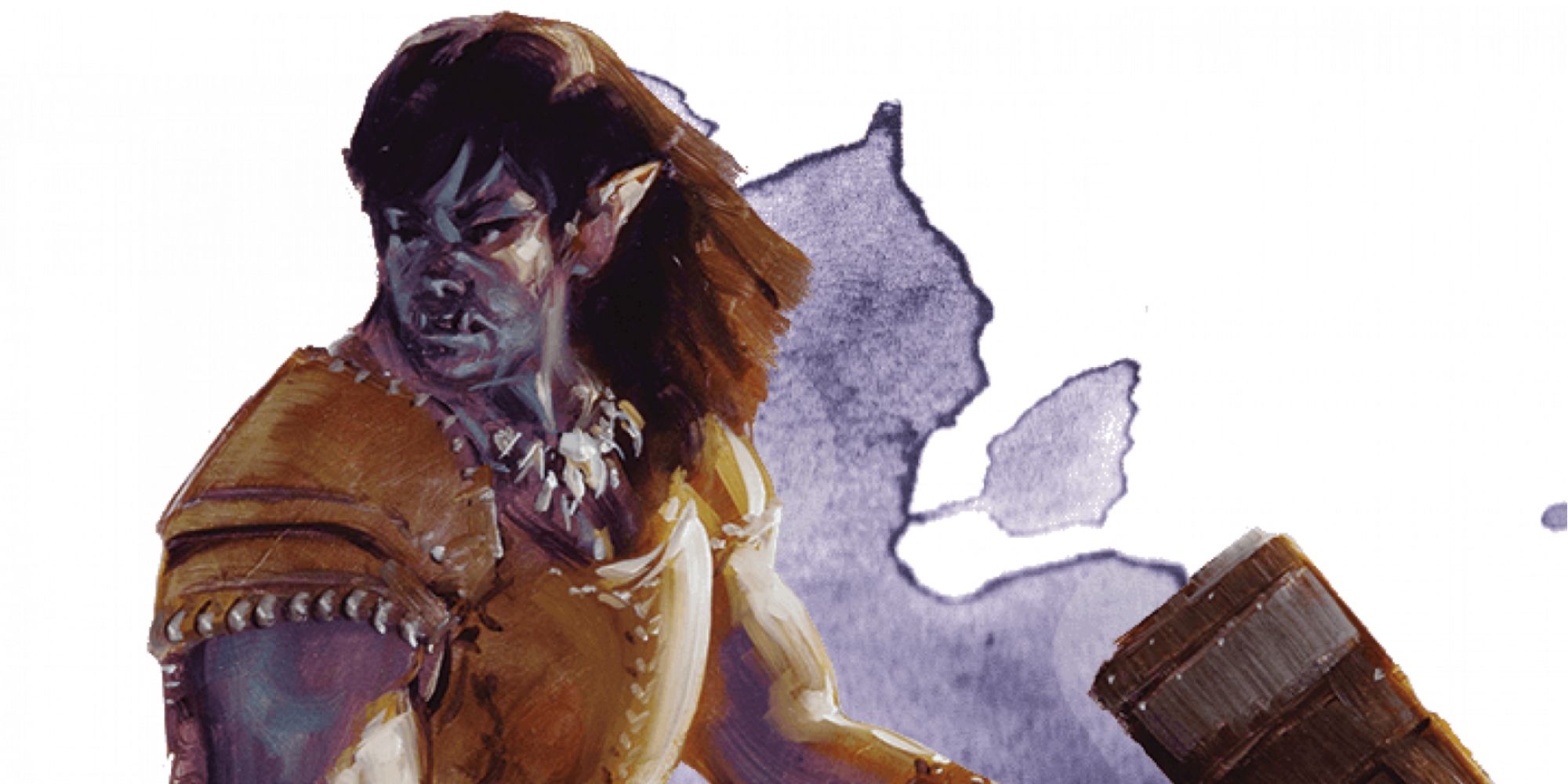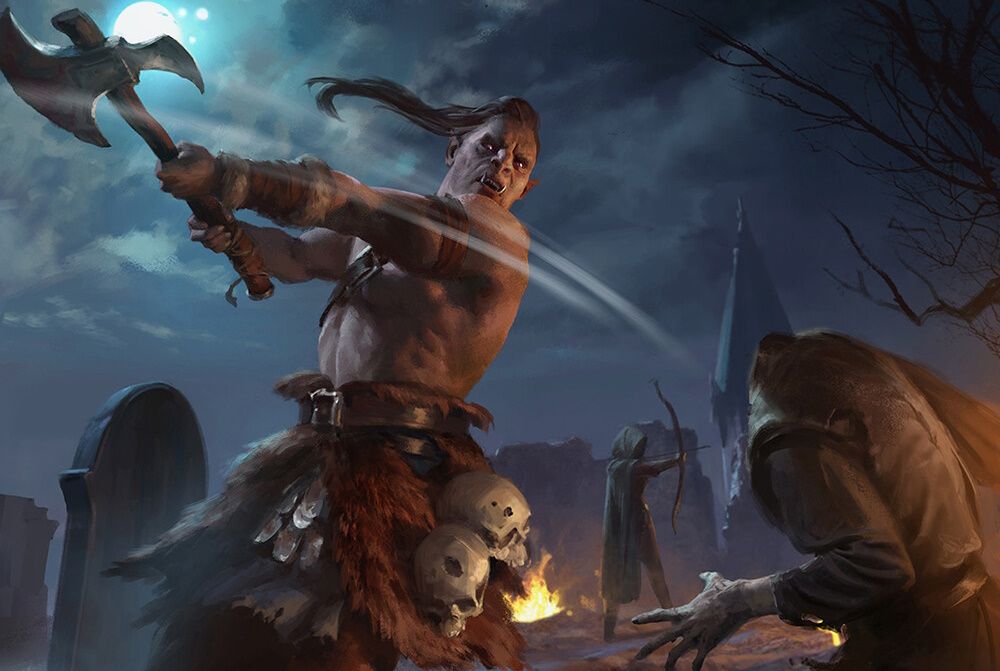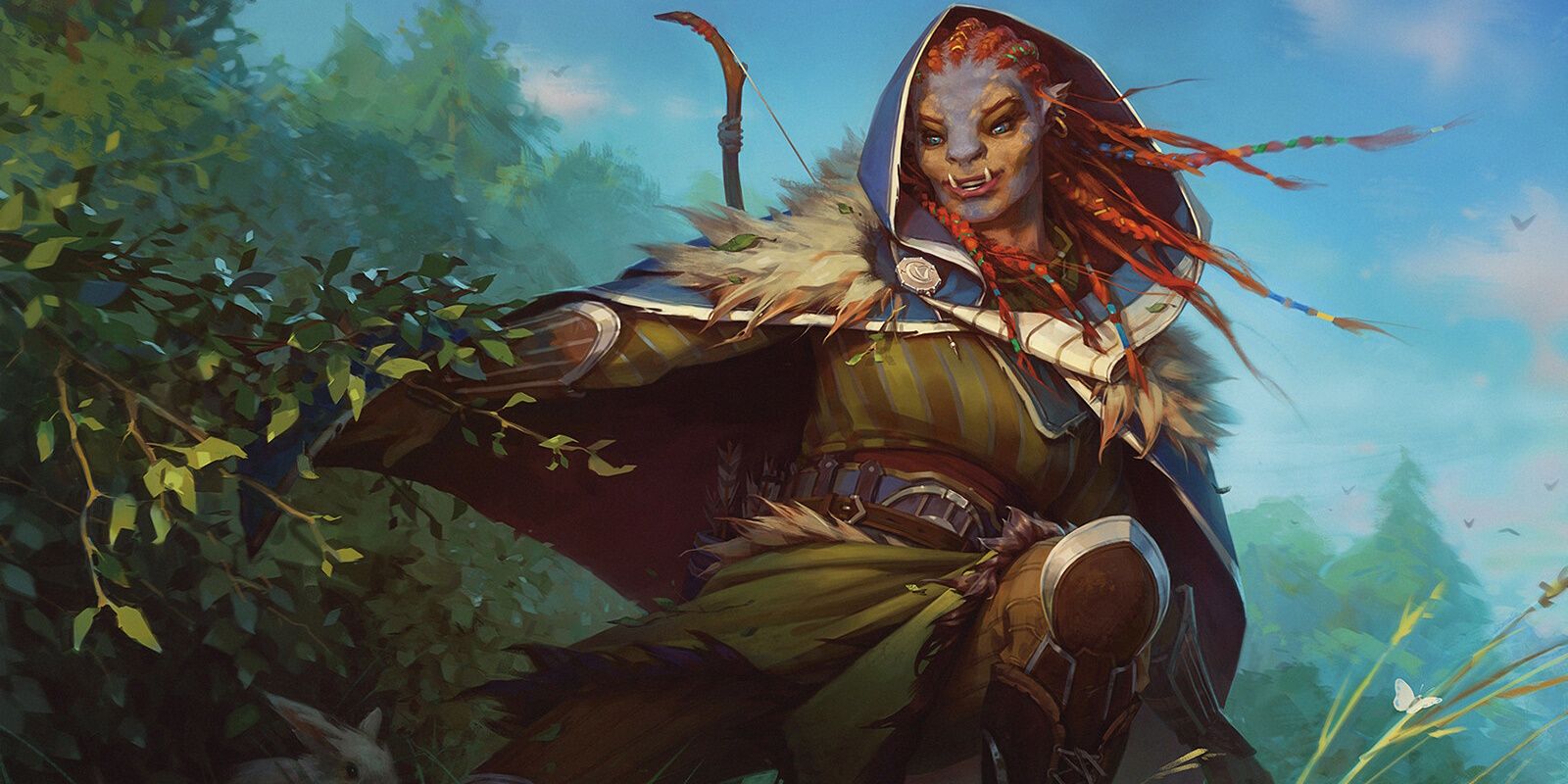Quick Links
Half-orcs are, traditionally, Dungeons & Dragons’ big, brutal, and mean species. They can take a hit and keep on coming. They love to wield big, angry melee weapons and can keep fighting when most other characters are already deep into their death-saving throws. As such, most people assume that Half-Orcs make the ideal barbarians and fighters, and they’d be mostly right.
Still, half-orcs have evolved quite a bit since Dungeons & Dragons first released, so you might be surprised to find other, less violent options available to your half-orc character. Read on to discover how to build a more wholesome and caring half-orc.
History Of The Half-Orcs
When an orc and a human love each other very much, the resulting offspring are called half-orcs. Historically, this has either happened as a result of conquest or alliances between orcish and human communities. Whatever the case, half-orcs share the height and bulk of their orcish side tempered by the somewhat more diminutive stature of their human side.
Half-orcs are typically taller and stronger than most humans, with pointed ears, grayish skin, and prominent teeth (although not necessarily to the point of being tusks). As a result, most find half-orcs rather intimidating.
Half-orcs also have incredible stamina, able to keep going where most species would have already perished. You can find half-orcs in some of the most extreme environments on the Material Plane.
Half-orcs are considered medium-sized creatures with a walking speed of 30 feet. When choosing a half-orc character, increase one ability score by two points and another ability score by one point.
If you’re not using the updated custom origins rules, half-orcs increase their Strength score by two points and Constitution by one point. Mark of Finding half-orcs increase their Wisdom score by two points and Constitution score by one point.
Half-Orc Features
Darkvision | Thanks to your orc blood, you have superior vision in dark and dim conditions. You can see in dim light within 60 feet of you as if it were bright light, and in darkness as if it were dim light. You can’t discern color in darkness, only shades of gray. |
|---|
Being able to see in the dark is always a benefit when dungeon diving. It'll save you the cost of a few torches or let you choose a different cantrip if you choose to be a magic-using class. Not that most half-orcs do that.
Menacing | You gain proficiency in the Intimidation skill. |
|---|
Being big and scary looking has its perks. However, you won't get the most benefit out of this proficiency without investing in Charisma, which isn't something most half-orcs do.
Relentless Endurance | When you are reduced to zero hit points but not killed outright, you can drop to one hit point instead. You can’t use this feature again until you finish a long rest. |
|---|
Keep going when most characters would drop dead. Relentless Endurance is a useful feature for all characters, but it's especially useful for characters that expect to take a lot of damage.
This feature makes half-orcs the best tanks in Dungeons & Dragons.
Savage Attacks | When you score a critical hit with a melee weapon attack, you can roll one of the weapon’s damage dice one additional time and add it to the extra damage of the critical hit. |
|---|
This feature only applies to melee characters that wield a weapon, so half-orcs are generally poor choices for ranged combat or magic users. Also, you'll want to use this feature with a class that gets multiple attacks per round, such as Fighters or Barbarians.
Best Classes For Half-Orcs
As with all characters in Dungeons & Dragons, feel free to play your half-orc in any class you wish. However, the half-orc features strongly lend themselves to melee-based characters, which is what we'll recommend below.
Barbarian | Easily the best class for half-orcs. Barbarians are often the party's tank, where Relentless Endurance shines. Combining Savage Attacks with Brutal Critical can lead to some truly astounding rounds in combat. You can't go wrong as a half-orc Barbarian. |
|---|---|
Fighter | After Barbarians, Fighters are the next best half-orc class for pretty much the same reasons. The Champion subclass is particularly well-suited to half-orcs as Improved Criticals allow you to trigger Savage Attacks more often. |
Paladin | Not as good as the previous two classes, but Paladins can still get some mileage out of Relentless Endurance and Savage Attacks. What you'll really get out of a Paladin half-orc is the Charisma score to make Menacing that much stronger. |
Rogue | It's somewhat amusing to imagine a hulking half-orc trying to hide under a kitchen table, but so long as you're using melee weapons, Savage Attacks can occasionally turn your sneak attacks into something truly terrifying. |
Monk | Most of your extra attacks as a Monk are going to be unarmed strikes, which makes Savage Attacks less useful. Relentless Endurance, however, can keep your half-orc Monk fighting and helps make up for their low hitpoint total. |
The Mark Of Finding Half-Orc
Introduced in Eberron - Rising from the Last War, the Mark of Finding half-orc provides an entirely different experience than most half-orc players have come to expect. These half-orcs bear the dragonmark of the hunter, giving them innate magics and advantages when hunting prey.
Mark of Finding Half-Orc Features
Hunter’s Intuition | When you make a Wisdom (Perception) or Wisdom (Survival) check, you can roll a d4 and add the number rolled to the ability check. |
|---|
Perception is often touted as the most-rolled skill in Dungeons & Dragons, so proficiency here is a huge boon. Survival checks happen less often, but can still be fairly frequent if your adventure takes place away from civilization.
Finder’s Magic | You can cast the hunter’s mark spell with this trait. Starting at third level, you can also cast the locate object spell with it. Once you cast either spell with this trait, you can’t cast that spell with it again until you finish a long rest. Wisdom is your spellcasting ability for these spells. |
|---|
Hunter's mark is typically a Ranger spell, so being able to cast it without being a Ranger is unique. Locate object can also be useful in certain circumstances.
Spells of the Mark | If you have the Spellcasting or the Pact Magic class feature, the spells on the Mark of Finding Spells table are added to the spell list of your spellcasting class.
|
|---|
That's a lot of spells to get from just being a half-orc. This lends Mark of Finding half-orcs to spellcasting classes such as Druids, Clerics, or Rangers.
Best Classes For Mark Of Finding Half-Orcs
Ranger | The most obvious choice for Mark of Finding half-orcs is Ranger. You free up a bunch of spell slots by getting all these spells for free, and hunter's mark is already a Ranger spell. Perception and Survival are both in the Ranger wheelhouse, too. |
|---|---|
Druid | You get less mileage out of the free hunter's mark, but all those spells are nice to have available. |
Cleric | Mark of Finding is less on-brand with most Clerics, but the Nature Domain subclass is a natural fit here. |





